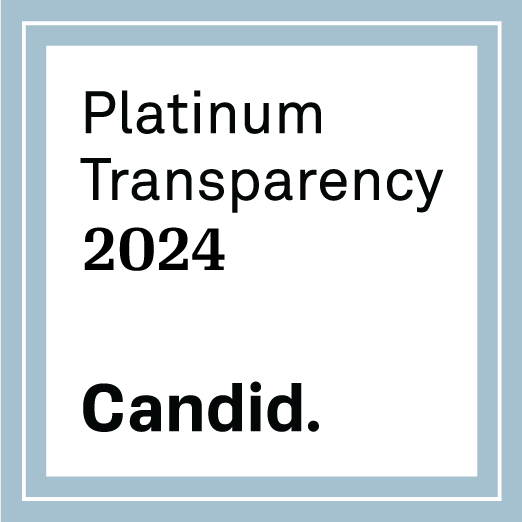|
Categories
Categories
All
Archive
Archives
July 2024
|
Money, mortality, and family relationships. Each of those topics alone can be tough for anyone to address head on, and when you combine them, it’s no wonder so many people put off setting up or updating their estate plans. Establishing a will, trust, and beneficiary designations forces a person to confront decisions about the ultimate division of their assets, and many people think estate planning is more expensive or more of a hassle than it really is.
But, getting your affairs in order–well before you need to due to age or illness–is truly a gift to your heirs. It’s extremely stressful for surviving spouses, children, and other loved ones to be faced with the emotional stress and workload of financial disorganization and uncertainty, on top of dealing with grief. Updating your estate plan also allows you to make arrangements for gifts upon your death to your favorite charities. Many people choose to support their favorite charities in an estate plan through a beneficiary designation. As you work with your attorney and other advisors, be sure to review the beneficiary designations on your insurance policies and retirement plans. Pay close attention to tax-deferred retirement plans such as 401(k)s and IRAs. Typically, you’ll name your spouse as the primary beneficiary of these accounts to provide income following your death and to comply with legal requirements. But as you and your advisors evaluate whom to name as a secondary beneficiary of these tax-deferred accounts, don’t automatically default to naming your children or your revocable trust. You and your advisors may determine that naming a charity, such as your fund at the Community Foundation, is by far the most tax-efficient, streamlined way to make gifts to your favorite causes upon your death and establish a philanthropic legacy. A bequest like this avoids not only estate tax, but also income tax on the retirement plan distributions. Please reach out to the team at the Community Foundation as you work with your advisors on your estate plan. We can:
We’ve all heard stories about the sad consequences of someone not having an estate plan, or even having out-of-date beneficiary designations. Estate planning documents, including wills, trusts, and beneficiary designations, often turn out to represent generous acts of clear distribution and conflict avoidance. An estate plan allows you to demonstrate how much you care about the people in your life as well as your charitable passions. This article is provided for informational purposes only. It is not intended as legal, accounting, or financial planning advice. Simplicity, efficiency, and effectiveness have long been cornerstones of working with the Community Foundation to carry out charitable goals. Time and time again at the Community Foundation, we see how easily donors who’ve established a donor-advised or other type of fund are able to not only fulfill their big-picture charitable goals, but to act quickly to respond to critical needs in the community as they occur..
The flexibility of working with the Community Foundation allows you to support the causes you love at a financial level that meets your charitable giving budget. Early in the year, many of our fund holders transfer highly-appreciated stock to their donor-advised fund, for example, at the Community Foundation so that they are prepared to activate their annual giving right away. At every level of giving, philanthropy is a catalyst for improving quality of life. Indeed, anyone with a willingness to give can be a philanthropist. Whether you’re using your donor-advised fund to give $250 to a college or university, $2,500 to an animal rescue, or $25,000 to the art museum’s endowment, you’re making a difference. Consider that small donations from a large number of people can make a huge difference. This is especially true for responses to disasters and humanitarian tragedies. On the other end of the spectrum, very large donations to an organization can transform its ability to scale and serve a much greater population. In so many ways, whether gifts are large or small or somewhere in between, philanthropy creates the margin of excellence that helps communities, families, and individuals thrive. The team at the Community Foundation is here to help you achieve satisfaction and impact with your giving at any level. This article is provided for informational purposes only. It is not intended as legal, accounting, or financial planning advice. Many donors and fund holders at the Community Foundation have updated their estate plans to leave a bequest to their donor-advised or other type of fund.
Some bequests take the form of a “specific bequest,” which means that the fund at the Community Foundation receives a specific amount of money from the donor’s probate estate or trust. For example, for a specific bequest, your advisor might include a provision in your will as follows: I bequeath $15,000 to The Community Foundation (taxpayer ID number and/or mailing address), a tax exempt organization under Internal Revenue Code Section 501(c)(3), to be added to the [Name of Your Fund], a component fund of The Community Foundation, and I direct that this bequest become part of the Fund. In these situations the Community Foundation will be ready to receive your bequest, typically as soon as the estate is settled. In other situations, you may want to leave a bequest of a portion of the remainder of your estate after all specific bequests, expenses, and taxes have been paid. These types of bequests are called “residuary” bequests. The language can look something like this: I leave all the rest and residue of my property, both real and personal, of whatever nature and wherever situated, and assets, including all real and personal property, tangible or intangible, to The Community Foundation (taxpayer ID number and/or mailing address), a tax exempt organization under Internal Revenue Code Section 501(c)(3), to be added to the [Name of Your Fund], a component fund of The Community Foundation, and I direct that this bequest become part of the Fund. Because the amount of a residuary bequest cannot be determined until all of the assets in an estate have been identified and valued, and all expenses and taxes have been paid, the designated charity (in this example, your fund at the Community Foundation) will not receive the full amount of a residuary bequest until the estate is completely settled. Typically, however, the estate’s personal representative or trustee will make what is known as a “partial distribution” to the residuary beneficiary (or beneficiaries as the case may be), as soon as the personal representative has enough information about the assets and liabilities to confidently do so. When you leave a residuary bequest to your fund at the Community Foundation, our team will be involved at various steps during the administration of your estate until final distribution. For example, the Community Foundation will receive regular communications about the estate related to assets, expenses, taxes, and periodic accountings. The Community Foundation will execute documents, such as receipts, related to distributions and other estate transactions. The team at the Community Foundation looks forward to working with you and your advisors to establish bequests to fulfill your charitable legacies. This article is provided for informational purposes only. It is not intended as legal, accounting, or financial planning advice. Your charitably-minded clients certainly have no shortage of options for their philanthropic dollars. Many clients use their donor-advised funds, for example, at the Community Foundation to support favorite charities across the country, including alma maters, organizations in the communities where they’ve lived in the past or have a second home, or charities in communities where their grown children are now living.
Many clients, though, are also deeply committed to the local community where they’re living now, where they’ve raised their children, and where they’ve built a business. That’s why it’s helpful to remind clients that they can reach out to the team at the Community Foundation when they want to make sure their dollars are making the biggest difference possible, right here in our community. Indeed, local giving satisfies many clients’ commitment to “take care of our own.” The unfortunate steady flow of crises and even disasters, coupled with decreasing state and federal funding to local nonprofits, means that philanthropy is playing an increasingly important role in our region. The Community Foundation, through its wide variety of fund types available to your clients (including endowment funds to support the community in perpetuity), can help your clients achieve their goals for local support, whether that takes the form of disaster recovery, supporting families in need, funding critical workforce development, or paving the way for historic preservation initiatives. The Community Foundation team is always happy to provide insight into the challenges our community is facing right now and which organizations are delivering services to alleviate those needs so that your clients can provide immediate support through their donor-advised funds. In addition, an unrestricted fund may be a good fit for clients who want to improve lives, right here in this community, for generations to come, whatever challenges our region may face at any given point in time. An unrestricted fund may be particularly compelling for your clients who are 70 ½ or older. These clients may be eligible to make annual distributions up to $105,000 per spouse from their IRAs directly to an unrestricted fund at the Community Foundation. This transfer is called a “Qualified Charitable Distribution,” or “QCD.” Not only do QCD transfers count toward satisfying Required Minimum Distributions, but your client also avoids the income tax on those funds. Furthermore, those assets are no longer part of the client’s estate upon death, so the client can avoid estate taxes, too. Please reach out to the team at the Community Foundation for more information on how your clients can support both current and future local needs, and also meet their own financial, tax, and generational legacy goals. The team at the Community Foundation is a resource and sounding board as you serve your philanthropic clients. We understand the charitable side of the equation and are happy to serve as a secondary source as you manage the primary relationship with your clients. This article is provided for informational purposes only. It is not intended as legal, accounting, or financial planning advice. Your clients who own highly-appreciated works of art certainly can consider making gifts of this property to a charity. Use caution, though, when helping clients structure gifts of artwork. To be eligible for a charitable deduction at fair market value, the nonprofit recipient’s use of the donated artwork must meet certain qualifications, in that the artwork has to be used for its charitable purpose (think art museums). On top of that, be wary of techniques that recently have come under severe IRS scrutiny and have been determined to circumvent the rules for tax deductions.
This article is provided for informational purposes only. It is not intended as legal, accounting, or financial planning advice. The year is in full swing. Attorneys, accountants, and financial advisors are asking clients to start gathering tax documents and related paperwork for 2023 tax returns and 2024 planning. Now is a good time for advisors to review a few basic tax principles related to charitable giving. Here are three questions that are top of mind for many advisors, along with answers that can help you serve your clients.
How important is it to high net-worth clients to get a tax deduction for gifts to charity? Among clients who own investments of $5 million or more, 91% of those surveyed reported that charitable giving is a component of their estate and financial plans. In another study, most affluent investors cited reasons for giving well beyond the possibility of a tax deduction and would not automatically reduce their giving if the charitable income tax deduction went away. What this means for your practice is that it’s important to be aware of your clients’ non-tax motivations for giving, such as family traditions, personal experiences, compassion for particular causes, and involvement with specific charitable organizations. This also means it’s critical to talk about charitable giving with all of your clients because it’s likely that most consider it to be important. Why do clients so often default to giving cash? Many clients simply are not aware of the tax benefits of giving highly-appreciated assets to their donor-advised or other type of fund at the Community Foundation or other public charity. Even if they are aware, they forget or are in a hurry and end up writing checks and making donations with their credit cards. It’s really important for advisors to remind clients about the benefits of donating non-cash assets such as highly-appreciated stock, or even complex assets (e.g., closely-held business interests and real estate). When clients give highly-appreciated assets in lieu of cash, they often can reduce–significantly–capital gains tax exposure, and they can calculate the deduction based on the full fair market value of the gifted assets. What are the basic deductibility rules for gifts to charities? It’s important to know that the deductibility rules are different for your clients’ gifts to a public charity (such as a fund at the Community Foundation) on one hand, and their gifts to a private foundation on the other hand. Clients’ gifts to public charities are deductible up to 50% of AGI, versus 30% for gifts to private foundations. In addition, gifts to public charities of non-marketable assets such as real estate and closely-held stock typically are deductible at fair market value, while the same assets given to a private foundation are deductible at the client’s cost basis. This difference can be enormous in terms of dollars, so make sure you let your clients know about this if they are planning major gifts to charities. So what’s the first step? Reach out to the team at the Community Foundation! We really mean it. Make it a habit to mention charitable giving to your clients. From that moment on, whatever the clients’ charitable priorities, consider our team to be your behind-the-scenes back office and support department to handle all of your clients’ charitable giving needs. The team at the Community Foundation is a resource and sounding board as you serve your philanthropic clients. We understand the charitable side of the equation and are happy to serve as a secondary source as you manage the primary relationship with your clients. This article is provided for informational purposes only. It is not intended as legal, accounting, or financial planning advice. Events are back! Yes, it’s true! If it feels like events are hot again, you are right! A recent OneCause study showed that 83% of charities are planning an in-person event for 2024, and one-third are planning a hybrid event. Check in with the team at the Community Foundation for ideas about how to include endowment fundraising in your event strategy.
Wealth transfer is happening. The wealth transfer hype continues, and the media seems to report new twists on a regular basis, including statistics about how Generation X’s and Millennials’ particular circumstances figure into the equation. The bottom line remains, though, that the next several years are critical to build and execute your endowment-building strategy. Please reach out to the Community Foundation for help with endowment gifts of complex assets, such as real estate, or tried-and-true gifts, such as highly-appreciated stock. Cause marketing considerations. Interested in aligning with a business or a brand? Cause marketing is not for every organization, but if you do decide to venture in, be sure to brush up on the rules and legal issues. Cause marketing can be a good way to amp up your organization’s brand, and, with savvy planning, you can leverage the increased visibility to grow your endowment. This article is provided for informational purposes only. It is not intended as legal, accounting, or financial planning advice. February – and early in the year in general – is a good time to make sure your plans are in place to grow your endowment. As you and your team work together to reach out to donors this month, consider the ways your endowment fundraising communications help you build the long-term relationships with donors that ultimately result in both current and planned gifts to your endowment fund at the Community Foundation.
Valentine’s Day itself is an opportunity to truly reflect on “long term” commitments. Endowments, of course, are intended to last in perpetuity... and the earliest valentines go back to the 1400s when an imprisoned medieval duke sent one to his wife. That brings new meaning to “standing the test of time!” Formalizing your organization’s endowment, especially through establishing an endowment fund at the Community Foundation, helps your organization attract donors’ investable gifts that can produce sustainable returns while the principal or endowed amount remains intact. This quarter, make it a priority to remind your donors about the various ways they can give to your endowment fund at the Community Foundation:
As always, the Community Foundation is here to assist with any type of gift to your endowment fund, whether the gift is simple or complex. Like relationships in your life, endowments need nurturing, and not just during Valentine’s Day month! The team at the Community Foundation welcomes the opportunity to help your endowment thrive in perpetuity. This article is provided for informational purposes only. It is not intended as legal, accounting, or financial planning advice. As you review your donor lists and plan 2024 cultivation activities, pay particular attention to donors you know are over the age of 70 ½. That’s because these donors are eligible to make what’s known as a “Qualified Charitable Distribution,” or “QCD,” to your organization’s endowment fund at the Community Foundation directly from the donor’s IRA.
You’ve likely heard a lot about QCDs because they are becoming a very popular financial and charitable planning tool. At the same time, QCDs are growing as the source of more and more confusion. Here are answers to the questions donors might ask you about QCDs so that your team can be prepared to answer them. As always, please do not hesitate to reach out to the Community Foundation for assistance. “Is an IRA (Individual Retirement Account) the only eligible source for Qualified Charitable Distributions?” Short answer: Almost. Long answer: An individual can make a Qualified Charitable Distribution directly to an eligible charity from a traditional IRA or an inherited IRA. If the individual’s employer is no longer contributing to a Simplified Employee Pension (SEP) plan or a Savings Incentive Match Plan for Employees (SIMPLE) IRA, the individual may use those accounts as well. In theory, a Roth IRA could be used to make a QCD, but it is rarely advantageous to do that because Roth IRA distributions are already tax-free. “What is the difference between a QCD and an RMD?” Short answer: Quite a bit! But a QCD can count toward an RMD. Long answer: Everyone must start taking Required Minimum Distributions (“RMDs”) from their qualified retirement plans, including IRAs, when they reach the age of 73. RMDs are taxable income. The Qualified Charitable Distribution, by contrast, is a distribution directly from certain types of qualified retirement plans (such as IRAs) to certain types of charities. When a taxpayer follows the rules, a QCD can count toward the taxpayer’s RMD for that year. And because the QCD goes directly to charity, the taxpayer is not taxed on that distribution. “Can a donor make a Qualified Charitable Distribution even if the donor is not yet required to take Required Minimum Distributions?” Short answer: Yes–within a very narrow age window. Long answer: RMDs and QCDs are both distributions that impact retirement-age taxpayers, and it would seem logical that the age thresholds would be the same. Under the SECURE Act, though, the required date for starting RMDs was shifted from 70 ½ to 72 and is now up to 73 (which is better for taxpayers who want to delay taxable income). A corresponding shift was not made to the eligible age for executing QCDs; that age is still 70 ½ (which benefits taxpayers who wish to access IRA funds to make charitable gifts even before they are required to take RMDs). The IRS’s rules for QCDs are captured in Internal Revenue Code Section 408 and summarized on pages 14 and 15 in Publication 590-B in its FAQs publication. “Can a donor direct a QCD to a fund at the Community Foundation?” Short answer: Yes, if it’s a qualifying fund. Long answer: While donor-advised funds are not eligible recipients of Qualified Charitable Distributions, other types of funds at the Community Foundation can receive QCDs. These funds include endowment funds established by nonprofit organizations. “How much can a donor give through a QCD?” Short answer: $105,000 per year. Long answer: A Qualified Charitable Distribution permits a donor (and a spouse from a spouse’s own IRA or IRAs) to transfer up to $105,000 each year from an IRA (or multiple IRAs) to a qualified charity. So, a married couple may be eligible to direct up to a total of $210,000 per year to charity from IRAs and avoid significant income tax liability. The Community Foundation is here to help you and your team tap into the potential of QCDs to grow your endowment fund. Please reach out! We’d love to talk about a QCD strategy for 2024 and beyond. This article is provided for informational purposes only. It is not intended as legal, accounting, or financial planning advice. |
Visit Us |
Contact Us
Office Hours: Monday - Thursday, 10am - 4pm
Remote/Virtual Hours: Friday, 10am - 4pm Meetings by Appointment |
Accredited by the National Standards for U.S. Community Foundations®
© Community Foundation of Grand Forks, East Grand Forks & Region. All rights reserved.
Privacy Statement | EIN: 45-0448088











